Hi everyone! I’m back on the blog with some new bird adventures. I also want to tell you about another opportunity to practice your citizen science. There is another bird count happening this month. The Great Backyard Bird Count is from February 12-15th. It is the perfect opportunity to get out in your backyard and help scientists learn more about your local bird populations. This count is super easy, just spend at least 15 minutes counting birds in your backyard, then upload your observations to the Great Backyard Bird Count website. I encourage everyone to try it!
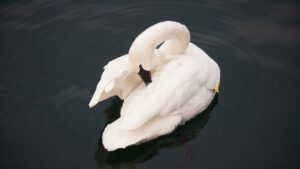
This week we are talking all about fancy feathers. As you know, I have been documenting the appearances of all the birds I see at my feeder. They each have unique and distinct markings on their feathers which help us to tell the difference between species, whether they are male and female and at which point they are in of their mating season. That’s right, birds can change their appearance through a process called molting! During a molt birds replace old feathers with new ones, making them look a bit different (brighter or more muted) and giving us important clues about their life cycles. We can learn a lot of information about birds by looking at their feathers.
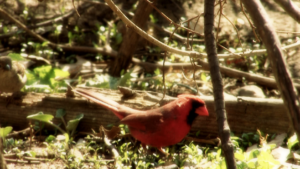
When you think about fancy feathers what first comes to mind? Maybe a peacock’s impressive tail, or a bright red Northern cardinal? These birds use their impressive plumage to find a mate. A female will choose her partner by looking at the potential mate’s feathers, listening to their songs and watching their dance moves. Some birds are experts at camouflage. If you see a bird whose feathers aren’t too fancy, in colours like brown, grey, cream or black, it means that they might live in a habitat that has a similar colour palette, allowing them to blend into their surroundings. But, after a recent trip to the lake, I can’t stop thinking about ducks! While I was exploring by the lake in my area, I saw so many different types of ducks, all with different kinds of fancy feathers. I began to realize that I had underestimated how impressive the plumage on ducks really is.
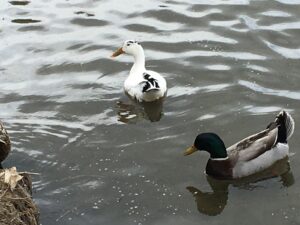

First of all, ducks have specialized feathers which help them to spend so much of their lives in and on the water. Their feathers allow for a waterproof barrier and provide insulation which protects them from the cold. Waterproofing their feathers is an important activity which takes place while they are preening. A preening duck uses a special oil to coat each feather. It uses its beak to carefully clean, arrange and waterproof each feather. You can tell a duck is preening if looks like it is gently nibbling or wiggling its beak between its feathers. During preening, the duck is also removing dirt, bugs and debris from its feathers which helps it to stay happy and healthy.

Black duck
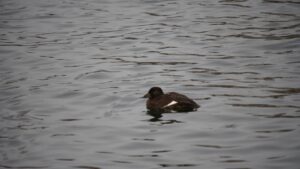
White-winged scoter
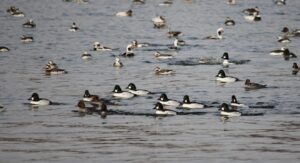
Goldeneye ducks
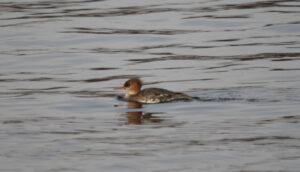
Merganser female
I saw five different species of ducks during my time by the lake: Black ducks, White-Winged Scoters, Common Goldeneye, Merganser ducks, and my favourite, Long-tailed ducks!
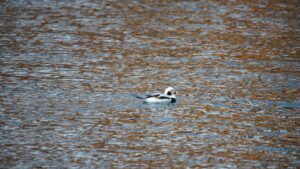
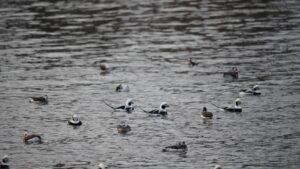
The Long-tailed ducks I saw are really special. They are visiting from the Arctic. As you can see from the picture and the name, the males have a really cool long tail that makes them instantly recognizable. For the Long-tailed duck, winter in Southern Ontario is a breeze compared to the harsh cold temperatures they would otherwise face. Another cool feather fact about the Long-tailed duck is that their molting pattern is shown in the colour of their head. If their head is mostly white with black cheeks, you know that it isn’t time for them to breed. However, if their head is mostly black with white eyes, they are ready to breed. Can you tell from the pictures whether or not it is breeding season?
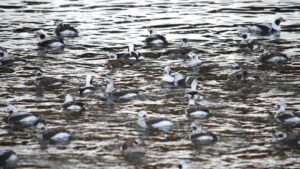
That’s all for this week! Keep an eye out for fancy feathers this week and tell me what you see. I hope you join me in participating in the upcoming Great Backyard Bird Count and enjoy spending some time with the birds. Until next time, happy birding!
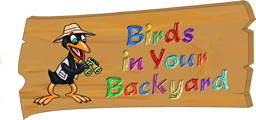
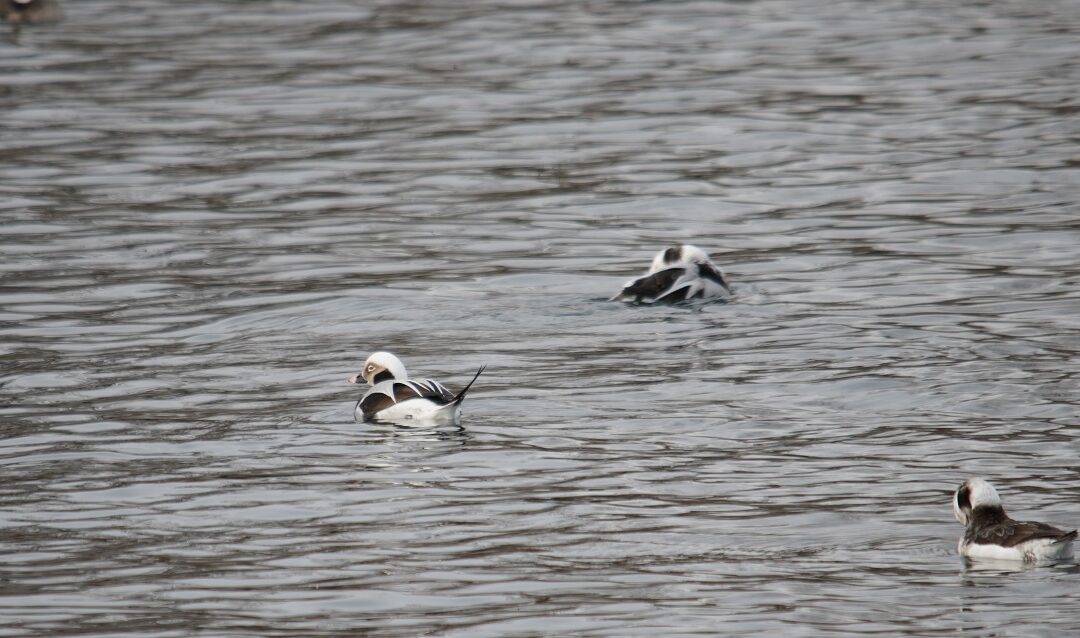
Recent Comments